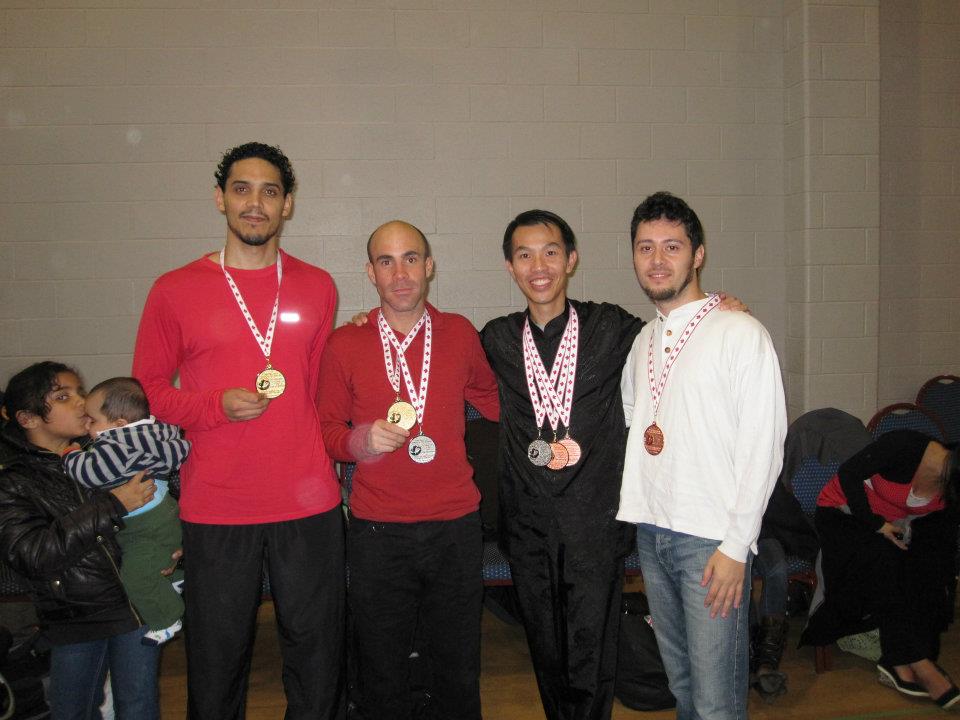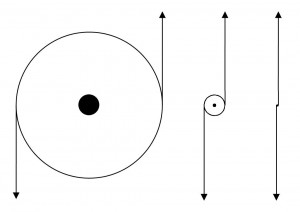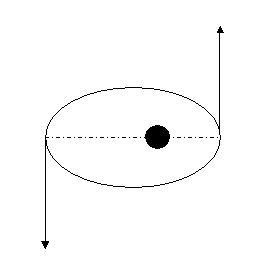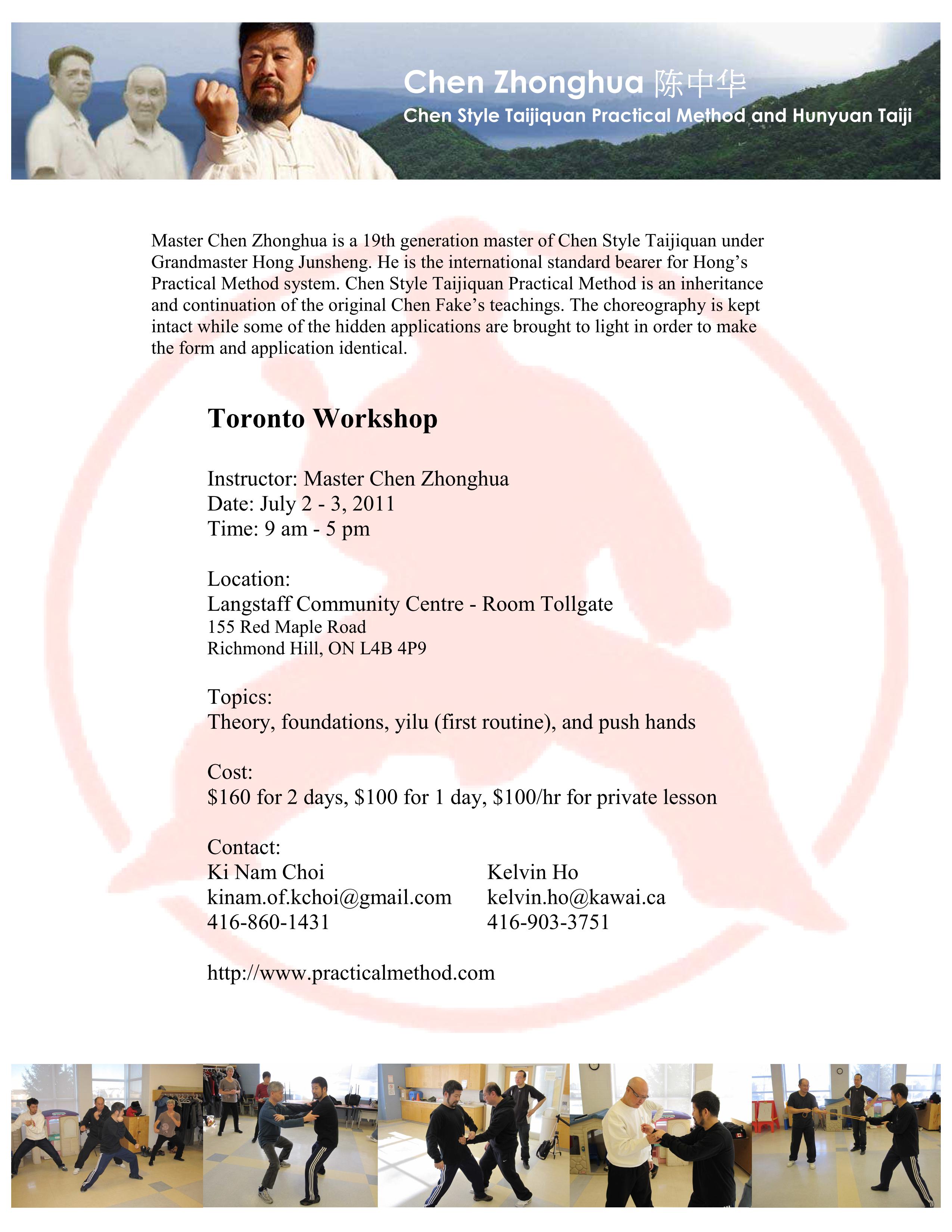Saturday, December 31, 2011
Saturday, December 17, 2011
Tuesday, November 15, 2011
2011 Canadian Taiji Open Championships Results

On Nov 12, 2011, Practical Method captured 7 medals in total.
Allan Haddad:
- Gold Medal - Moving Step Push Hands (185 lbs and over)
- Gold Medal - Moving Step Push Hands (140 lbs - 155 lbs),
- Silver Medal - Other Form - Yilu
- Silver Medal - Fixed Step Push Hands (139 lbs and under),
- Bronze Medal - Moving Step Push Hands (139 lbs and under),
- Bronze Medal - Other Form - Yilu
- Bronze Medal - Fixed Step Push Hands (140 - 155lbs)
Nick also up-challenged the gold medalist of the next category, and he won with flying colors.
Sunday, October 23, 2011
Wednesday, October 19, 2011
Goal Setting
“People with clear, written goals, accomplish far more in a shorter period of time than people without them could ever imagine.” - Anonymous
1) 5 Yilus every day until June 30, 2012.
2) 6 Yilus every day from July 1, 2012 to Dec 31, 2012.
1) 5 Yilus every day until June 30, 2012.
2) 6 Yilus every day from July 1, 2012 to Dec 31, 2012.
Monday, October 17, 2011
Thursday, October 13, 2011
Yilu Observations
One of the things I focus on recently is whether I am backloading on my rear foot in stances such as single whip (left side forward) and six sealings four closings (right side forward). I noticed this morning that my right side forward stance was done better. The rear kua should be lower than the front kua. As I tried to adjust my left side forward stance, I found a way that I could fix my problem. When I stretched the part behind the knee along the back of the rear leg, it helped put my rear kua at the correct position. I remembered that Master Chen mentioned something liked that in how we should push the middle joint in a bi-folding door. By doing so, I also felt a stronger connection between the front hand and the rear foot. I realized when I kept reproducing that stretch feeling, my rear kua would be in the correct position. I also realized that this feeling was mine and only mine, it helped me to reproduce what I wanted according to the rules and restrictions. Others, however, should not be looking for it, and feeling is an abstract thing and difficult to describe, and can easily mislead people. Everyone should practice according to the rules and restrictions. As I do my 5 yilu per day routine, I can see how it will improve my yilu over time.
Chen Style Taijiquan Practical Method - Toronto Beginner Class
Wednesday, October 5, 2011
Master Chen's Challenge - 25 Yilus per day
In the last Toronto workshop (Sep 22-25, 2011), he told us to do 25 yilus per day. Since the Nov 12, 2011 competition is coming up, Allan, Nick and I agree to push ourselves to do yilus every day. We each set our own goals (# of yilus per day), we will see who completes the said goal by Nov 11, 2011.
25 yilus per day is quite far fetched for me at this point as it takes me about an hour to do 5 yilus. I can't find 5 hours to practice each day, and I am not physically fit enough to do that many at the moment, but I'll get there some day.
So far, since Sep 28, 2011, I have been doing 5 yilus per day. I hope that the daily routine adjustment can stay, and I can keep doing this as I know for certain that this will help me improve.
25 yilus per day is quite far fetched for me at this point as it takes me about an hour to do 5 yilus. I can't find 5 hours to practice each day, and I am not physically fit enough to do that many at the moment, but I'll get there some day.
So far, since Sep 28, 2011, I have been doing 5 yilus per day. I hope that the daily routine adjustment can stay, and I can keep doing this as I know for certain that this will help me improve.
Sunday, August 21, 2011
Thursday, August 18, 2011
Pushing hand with someone who just passed by
Today, I practiced at Bayview Hill Community Centre. Someone who passed by where I practiced asked if we could push hands. He said he hadn't done it for a year of so. We started with one-hand push hand, I noticed he was expecting us to go back and forth. I normally don't practice that way, I actually wasn't sure what I was supposed to do, and I just put my hand up, and didn't move much while he was trying to push it somehow. I did notice that my upper arm and shoulder muscles got tired and sore. I asked if we could just do the free-style moving step push hands, and then we started doing that. No one fell down or anything like that. I tried to move in, but I wasn't able to as his hands were just moving all the time. I was distracted by them. He pushed me a few times quite hard in a straight forward fashion, and I was pushed backward a bit. I felt that I was able to brush him off sideways once, and that was it. I tried to get under him, but wasn't successful. I was happy that he was more out of breath than I was at the end.
Thursday, May 5, 2011
Sunday, April 17, 2011
Wednesday, March 23, 2011
Separation of Yin and Yang
 |  |
Master Chen says that separation of yin and yang is rotation in today's terms. He also mentions that stretching is an instance of separation of yin and yang. Today, I came to a realization that when the circle becomes infinitely small, rotation and stretching are really one and the same. The key is that the setup needs 3 points, and one action, which is the rotation, at the centre or the pivoting point or the fixed point. The rotation at the centre is the only thing I can do to ensure that the other 2 points are opposites but of the exact same size. For example, if I just move the hands in opposite directions, since there is no relationship between them (no 3rd point linking the two together), there is no guarantee that their actions are the same in size. At the beginning, I can visualize how the dantian acts the centre and modulates the other 2 points (hand and foot). Hopefully in the future, I can place the centre/fixed point anywhere inside or outside of the body as desired like Master Chen said.
In order to materialize this theory in practice, more training in foundation and yilu will be the way to go.
More discussion occurs at http://practicalmethod.com/lang/en/2011/03/separation-of-yin-and-yang-2.
Saturday, March 19, 2011
Chen Zhonghua on Peng Energy in Chen Style Taijiquan
http://www.chenzhonghua.com/index.php?option=com_content&view=article&id=308:chen-zhonghua-on-peng-energy-in-chen-style-taijiquan&catid=40:theory&Itemid=97
"Nobody has the patience to wait and spin. If I am reacting and someone is pushing, and I wait until he has enough friction, I spin and it works. But if I’m too impatient, he pushes and I move forward or backward instead of spin; it becomes a toss, because I go too early. That’s why you have to be patient, and you have to follow the rules. Following the rules is very difficult because when we see an opportunity we want to fight. And in taiji, the rules say you can’t. Even if he’s not blocking […] you have to wait until he comes in and then you can spin him."
I like this paragraph very much.
"Nobody has the patience to wait and spin. If I am reacting and someone is pushing, and I wait until he has enough friction, I spin and it works. But if I’m too impatient, he pushes and I move forward or backward instead of spin; it becomes a toss, because I go too early. That’s why you have to be patient, and you have to follow the rules. Following the rules is very difficult because when we see an opportunity we want to fight. And in taiji, the rules say you can’t. Even if he’s not blocking […] you have to wait until he comes in and then you can spin him."
I like this paragraph very much.
Saturday, March 12, 2011
Monday, February 14, 2011
Tuesday, January 25, 2011
Notes for Toronto Workshop Jan. 22-23, 2011
- 5 of 8 Features of Practical Method:
- Eye fixed on the target.
- Concave circle.
- In with elbow, out with hand.
- No dynamic power, only structure power.
- Half horse stand, one third, one third, one third
- Get your body into a line.
- Keep the invisible line of the triangle fixed.
- Double Fixed, Single Fixed (bi-folding door)
- shoulder – double fixed, hand – single fixed; elbow opens, and hand goes out along the line.
- rear foot – doubled fixed, hand – single fixed; shoulder gets into the line formed by rear foot and hand, hand goes out along the line.
- Train yourself to become a machine that simply repeats the same movement. No emotion. Stone faced.
- Stay on the wall with hand out in negative circle. The shoulder rotates down, and it will eventually push the hand up the wall up from the thigh.
- Do what are told only. People tend to do whatever they want until they are told not to. That is a bad habit.
Friday, January 21, 2011
Private Lesson with Master Chen Zhonghua
Tonight, we did yilu corrections and push hands.
Yilu corrections:
Yilu corrections:
- Form 42. Embrace Head to Push Mountain (Bao Tou Tui Shan) - I need to imagine a line when the right hand goes out from the chest and under the left armpit, once the arm is extended, open the right shoulder to bring it inline with the line formed between the right hand and the chest.
- Structure is there, next step is to maintain the structure when I move the legs. Keep the upper half steady and stable, while the lower half moves.
- Concept of a fork. Imaging a triangle is formed with the holding end and the 2 outermost points at the pointy end. When I twist the holding end, the pointy end will rotate. The power source (the active point) is at the holding end. The opponent will think that the power is at the pointy end, therefore, will not be able to stop the rotation. Between the 2 points at the pointy end, they are both passive, but one is more passive than the other. The most passive one gives the illusion to the opponent that it is the source of power. Master Chen showed me another example: a triangle formed by the dantien and two knees. He rotates the dantian, and the front knee is the less passive, and the rear knee is more passive, and the rear passive knee is free to move up to the front. Form a reverse 'V' with your fingers, rotate the converging point (the active point).
- Don't move up and down. Keep the same height through the entire routine.
- Don't ever retreat, do what you need to do to move a little bit forward. If you are climbing a wall with 2 hands, you have to anchor the left hand, and move the right hand, then anchor the right hand, and move the left hand. Repeat this process as you go up. If you do this in many, many small increments, you will appear to others as if you are moving up very smoothly.
- Move, adjust, move, adjust, move adjust, repeat many of these.
- Aim your dantien to the opponent's dantien, and keep the aim fixed and forever.
- Someone pushes my right elbow to the chest, I step forward (bring my waist closer to the opponent). I keep the front kua (in this case, the right kua) fixed, and extend my hand while at the same time, I need to make sure the energy comes back to my centre. The size of the circle depends on the amount of force from the opponent on me. At a certain point after I extend my hand, I rotate my shoulder (outside downward) while my waist keeps turning right (yin yang split here).
- When someone pushes straight onto me, I need to make sure that my back doesn't move, so I can just brush the person off to the side (of course, timing is important here to catch the moment). Also, my rear kua needs to rotate downward to my point at my ankle.
- After the hands touch the opponent, keep the arms fixed (no movement whatsoever). Use the rest of the body to adjust. Imagine a line between the hand and the rear foot, bring the shoulder into that line.
- Concept of a boat floating on the wave. It is always on top of the wave for the same amount. The wave goes high, it goes high; the wave goes low, it goes low.
- When pushing someone forward, look for the point, go over it. Since the opponent is not static, that point you are looking for will keep changing, so you have to adjust to look for it, go over it a bit, adjust to look for it, go over it a bit, and repeat forever. Going over it is like rotating over it.
- Look for the fixed point in the opponent's body, do whatever to move that point.
- Rear-wheel drive is strong, front-wheel drive is convenient to use.
- The movement needs to be just right, not too much, not too little.
- In push hands, I need to make sure that I maintain a fixed point for a given movement, while looking to move the opponent's fixed point. Once the move is done (stopped), you change the location of the fixed point, and execute another move.
- A complete rotation in reality is composed of many different arcs with different fixed points in the three-dimensional space.
- What Master Chen said tonight all seemed to be variations of the same thing.
Positive Circle:
- Keep the rear waist fixed when the elbow comes in, and keep the front waist fixed when the hand goes out.
Sunday, January 16, 2011
Learn to learn
http://www.silveryhat.com/learn-to-learn/#more-462
I remembered Master Chen telling us similar stories.
I remembered Master Chen telling us similar stories.
Friday, January 7, 2011
Yin Yang Split
http://practicalmethod.com/lang/en/2011/01/yin-yang-split-training/#more-10387
This confirms my understanding on how to create a yin-yang separation in those situations.
This confirms my understanding on how to create a yin-yang separation in those situations.
Monday, January 3, 2011
Subscribe to:
Posts (Atom)
